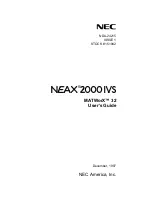
106
Chapter 6. Red Hat Network Website
6.4.7.2. Using Multiple Activation Keys at Once —
Provisioning customers should note that multiple activation keys can be included at the
command line or in a single kickstart profile. This allows you to aggregate the aspects of
various keys without recreating a new key specific to the desired systems, simplifying the
registration and kickstart processes while slowing the growth of your key list.
Without this stacking ability, your organization would need at least six activation keys to
manage four server groups and subscribe a server to any two groups. Factor in two versions
of the operating system, such as Red Hat Enterprise Linux 3 and 4, and you need twice the
number of activation keys. A larger organization would need keys in the dozens.
Registering with multiple activation keys requires some caution; conflicts between some
values cause registration to fail. Conflicts in the following values do not cause registration
to fail, a combination of values is applied: software packages, software child channels,
and config channels. Conflicts in the remaining properties are resolved in the following
manner:
•
base software channels — registration fails
•
entitlements — registration fails
•
enable config flag — configuration management is set
Do not use system-specific activation keys along with other activation keys; registration
fails in this event..
You are now ready to use multiple activation keys at once. This is done with comma sep-
aration at the command line with
rhnreg_ks
or in a kickstart profile within the
Post
tab
of the
Kickstart Details
page. Refer to Section 2.5
Registering with Activation Keys
and
Section 6.4.10.3
Creating Kickstarts
, respectively, for instructions.
6.4.8. Stored Profiles —
RHN Provisioning customers can create package profiles through the
Profiles
subtab of the
Packages
tab within the
System Details
page. Those profiles are displayed on the
Stored
Profiles
page, where they may be edited and even deleted.
To edit a profile, click its name in the list, alter its name and description, and click the
Update Profile
button. To view software associated with the profile, click the
Packages
subtab. To remove the profile entirely, click
delete stored profile
at the upper-right corner
of the page.
Содержание NETWORK 4.0 -
Страница 1: ...Red Hat Network 4 0 Reference Guide...
Страница 10: ......
Страница 16: ...vi Introduction to the Guide...
Страница 24: ...8 Chapter 1 Red Hat Network Overview...
Страница 40: ...24 Chapter 2 Red Hat Update Agent Figure 2 11 Available Package Updates...
Страница 58: ...42 Chapter 2 Red Hat Update Agent...
Страница 80: ...64 Chapter 5 Red Hat Network Registration Client Figure 5 15 Text Mode Welcome Screen...
Страница 186: ...170 Chapter 7 Monitoring...
Страница 200: ...184 Chapter 8 UNIX Support Guide...
Страница 214: ...198 Appendix A Command Line Config Management Tools...
Страница 274: ...258 Appendix C Probes...
Страница 282: ...266 Glossary...















































